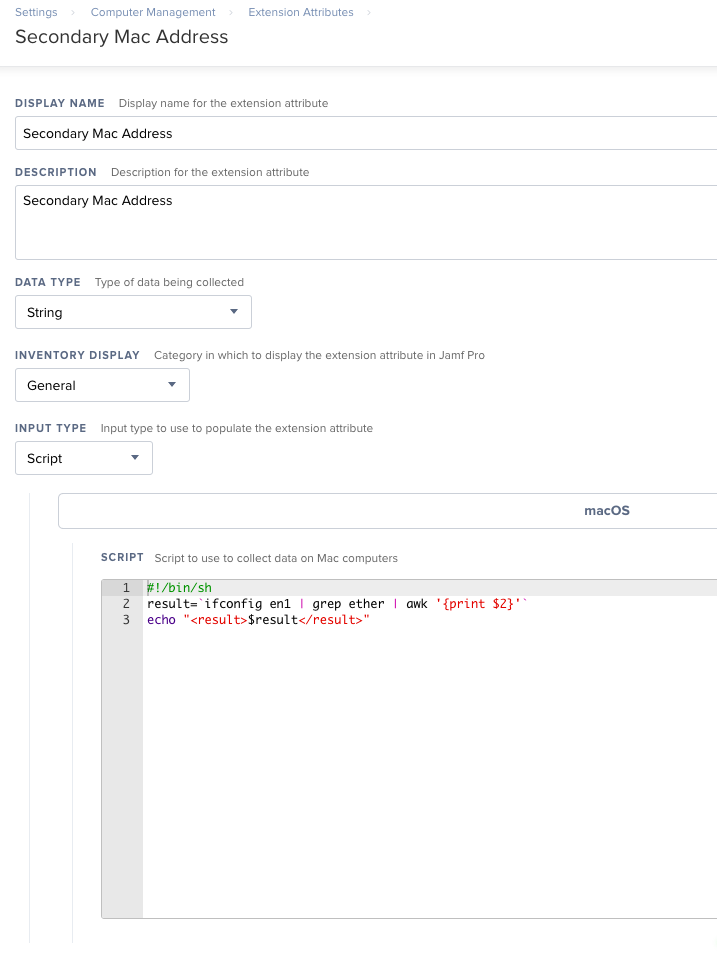Didn't Find a Solution on here so I thought I would share mine that worked flawlessly.
Solved
Secondary Mac Address - ( How To Export Data ) - Extension Attribute
Best answer by Hugonaut
THIS NOTE IS ADDED AFTER @bpavlov @mm2270 provided the below insight & comments THIS WORKS FOR OLDER (late 2009 & up) MacBook Pro Models & The 2016 Air Models. Our en1 configured is configured for wifi & en0 is configured for ethernet. en0 being primary & en1 being secondary in our JSS.
Steps
Create an extension attribute with the following script & Wallah (can obvi replace en1 w/ whatever you want from the ifconfig options.
Once configured you can create an Advanced Computer Search and select your secondary mac address extension attribute and export =)
#!/bin/sh
result=`ifconfig en1 | grep ether | awk '{print $2}'`
echo "<result>$result</result>"
Reply
Enter your E-mail address. We'll send you an e-mail with instructions to reset your password.



